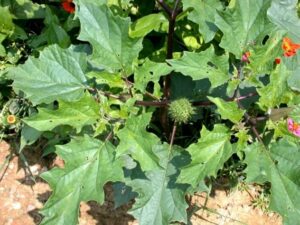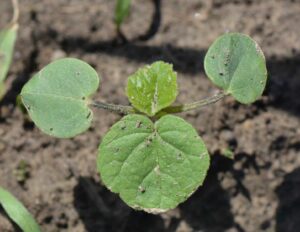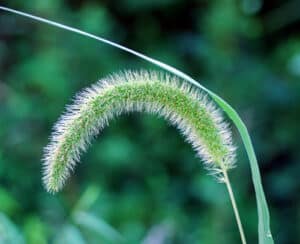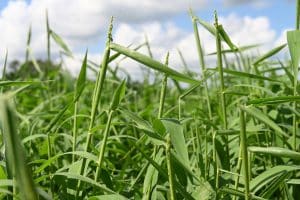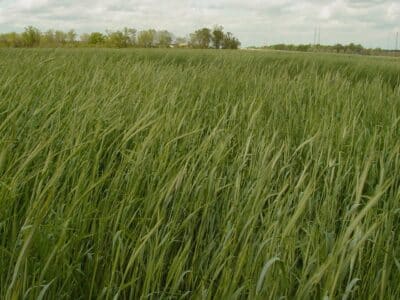Ipomoea hederacea, ivyleaf morningglory
Ipomoea lacunosa, pitted morningglory
Ipomoea purpurea, tall morningglory
Note: This information is based on experience in the Mid-Atlantic states; recommendations in other regions may vary.
Morningglories (Ipomoea species) are summer annual broadleaf weeds with similar life cycles, growth habits, and response to management. They are in the morningglory family, which includes perennial weeds (bindweed and bigroot morningglory), parasitic weeds (dodder), ornamental species, as well as sweet potato. Annual morningglory weeds are a serious problem in agronomic crops due to their vining growth habits, which allow them to grow up plant stems, often pulling them down to the ground. The vining of the morningglory can interfere with harvesting. The prolonged germination period of morningglory species complicates management.
Identifying Features
Morningglories are identified by their vining growth habit. Ivyleaf morningglory has purple to blue or white flowers and pubescent leaves with three lobes (resembling common ivy); pitted morningglory has white flowers and heart-shaped leaves that have no hairs; and tall morningglory has purple to white flowers and oval to heart-shaped leaves with dense, short hairs. Tall morningglory is slightly more aggressive in growth habits than the other two species
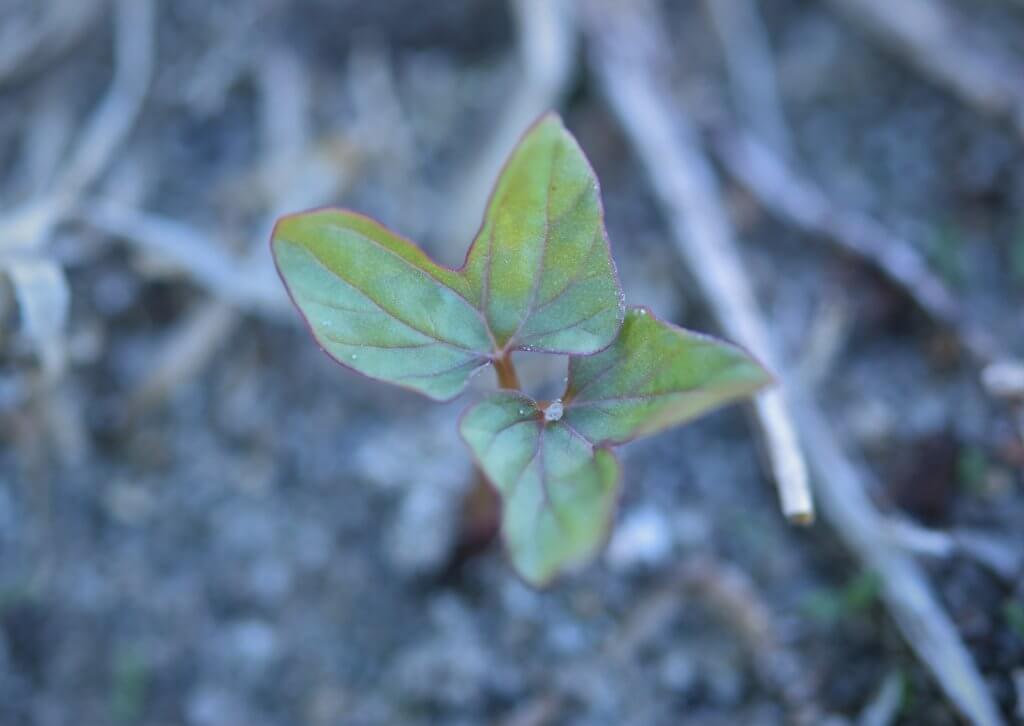
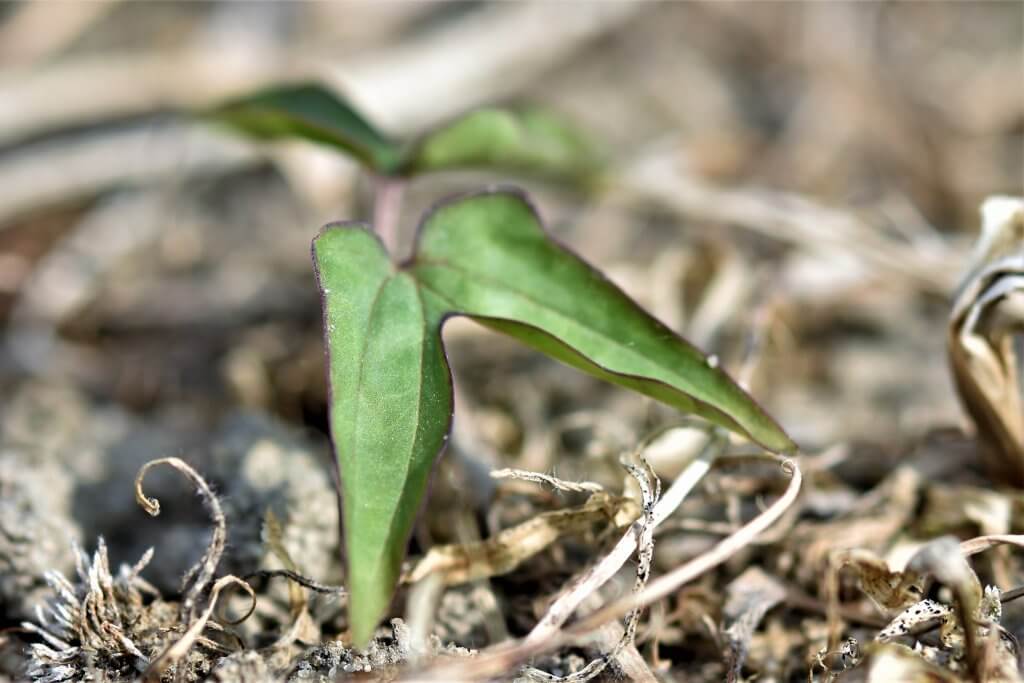
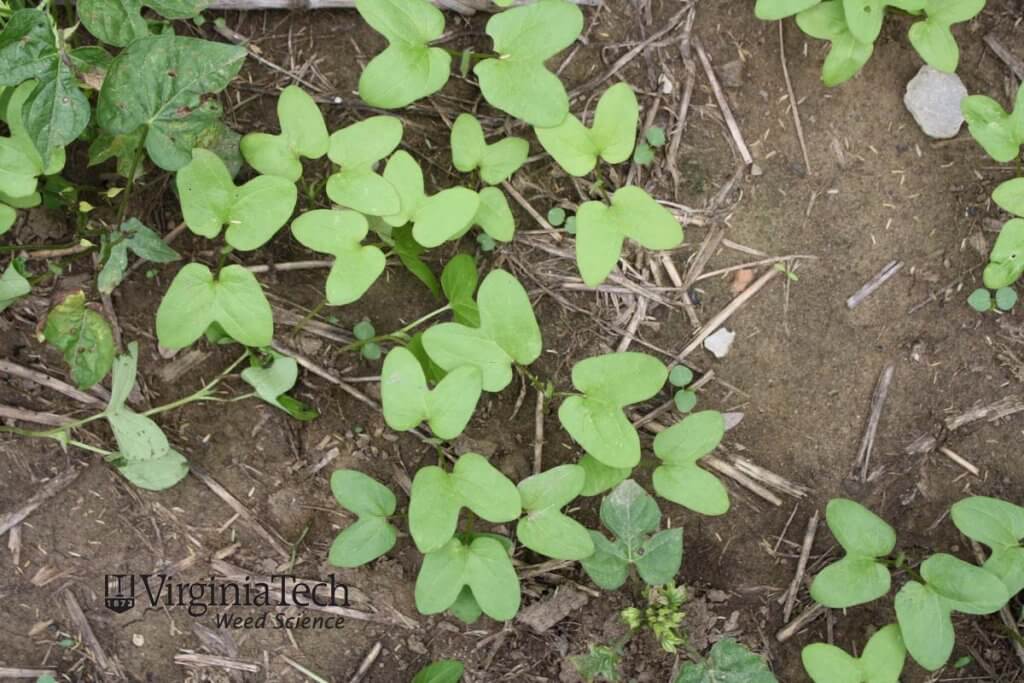
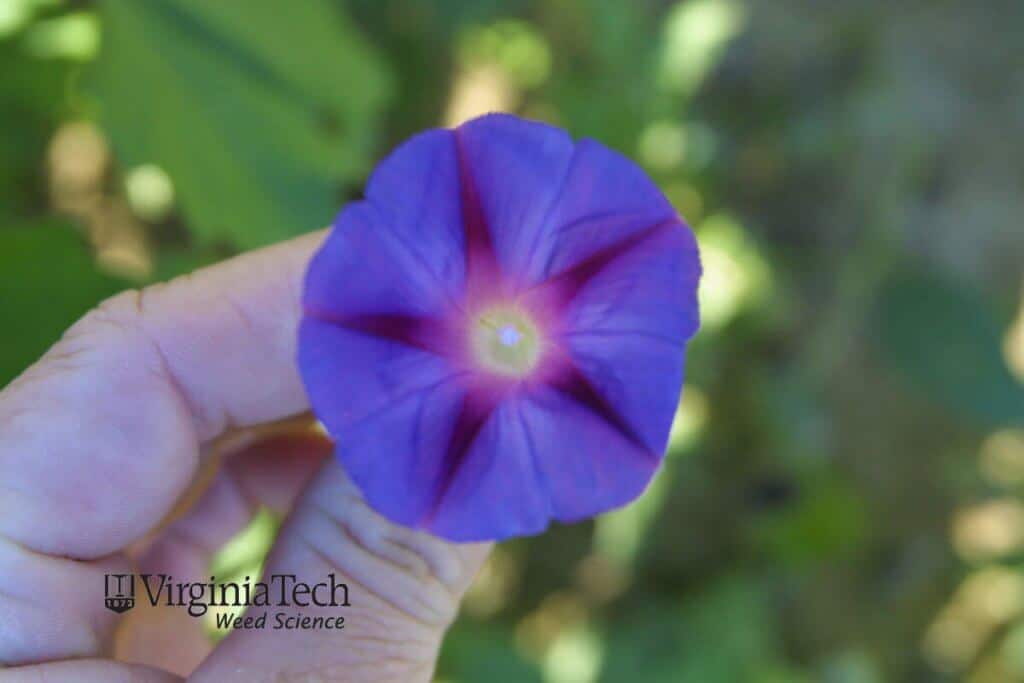
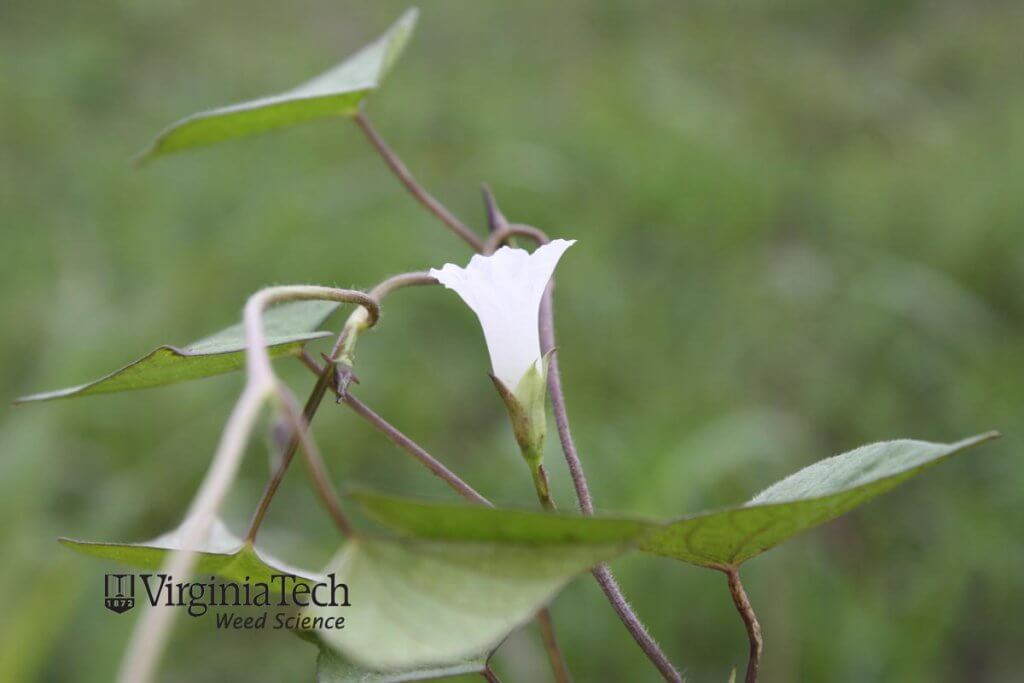
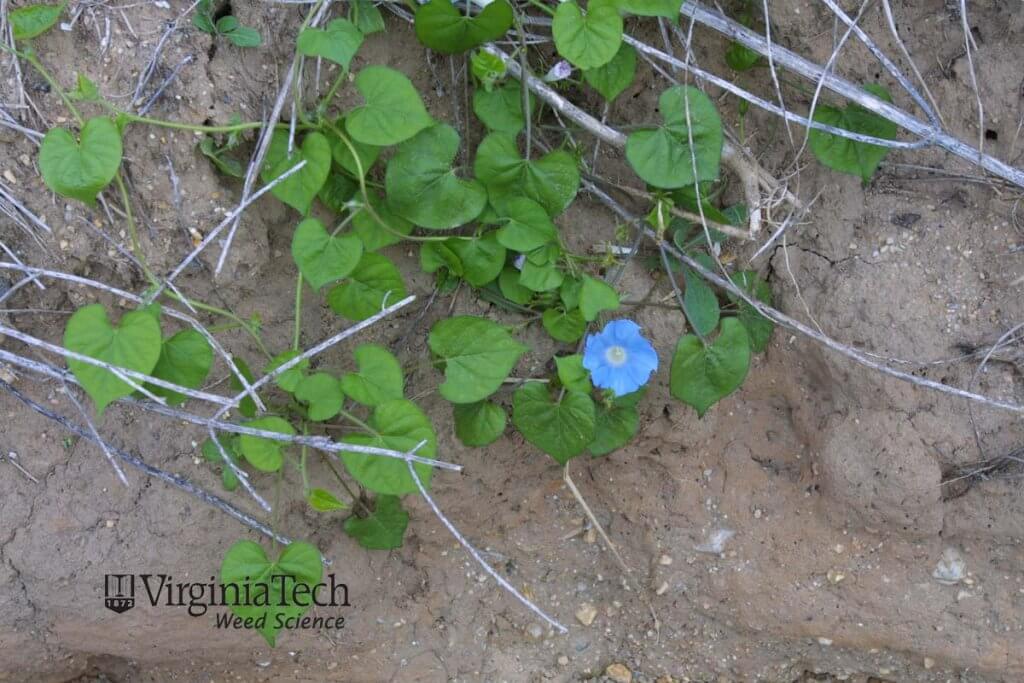
Seed Production
A seed pod (or fruit) develops containing four to six seeds. A pitted morningglory plant can produce 800 seeds. The seeds and seed pods can be difficult to separate from harvested grain.
Herbicide-Resistance
None reported.
Management
Successful management of morningglory species starts with encouraging rapid crop growth through good cultural practices such as maintaining adequate soil fertility, choosing appropriate high-yielding crop varieties, and regularly scouting for and managing pests. Include crops in the rotation that provide early competition, such as alfalfa or small grains. Using no-till in fields or using rye cover crops that are allowed to grow until heading before they are terminated will also help improve management. These species have large seeds that allow them to emerge from deeper than 1 inch deep in the soil. Often seeds emerging from that depth are not effectively controlled with soil-applied herbicides. Furthermore, once these plants start to “vine” (often occurs at approximately the six-leaf stage), they are less susceptible to postemergence herbicides.
Corn
Herbicides are essential in a morningglory management program but use them in combination with other control methods. Atrazine and simazine are the most effective soil-applied corn herbicides, but they alone at planting will not provide full-season control. Moderate to heavily infested fields will need a POST (foliar-applied) herbicide application to provide the best control. 2,4-D, atrazine, dicamba (Status, DiFlexx, etc), glyphosate, and Liberty are the most effective POST treatments when applied before morningglory has five to six leaves. Early POST treatments should include atrazine (at least 1.25 pounds) for additional residual control.
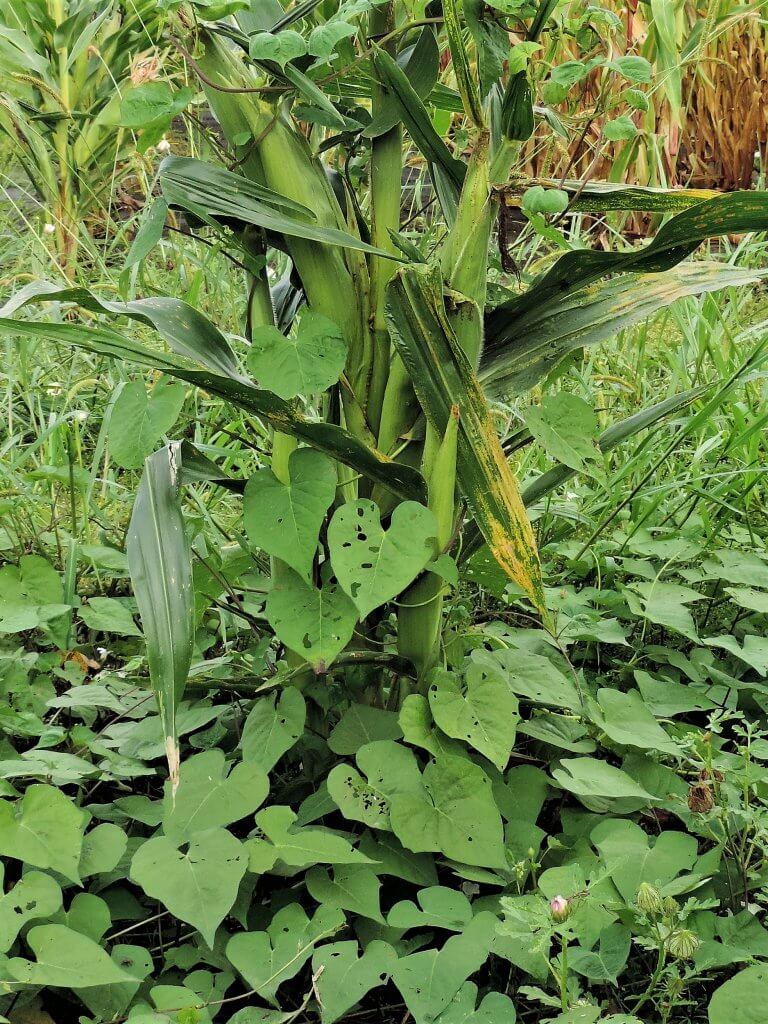
Sorghum
Management of morningglory in sorghum should be similar to that for corn and relies on POST herbicides. Some of the same herbicides, except Liberty and glyphosate, can be used in sorghum.
Soybean
Morningglory may be easier to manage in soybean than in corn simply because the soybean canopy is often denser than corn and the later planting date means earlier emerging morningglory plants are controlled with tillage or burndown herbicide application. The most effective soil-applied herbicides for morningglory control in soybean are chlorimuron (in premixes like Canopy), cloransulam (in premixes like Surveil or Authority XL), flumioxazin (Valor EZ), and sulfentrazone (Authority products). Effectiveness is dependent on rate, and many premixes have lower rates of these active ingredients; refer to extension publications for appropriate rates. The need for residual control with POST herbicide applications appears to be less critical for soybean than has been in corn. Effectiveness of POST herbicides requires a timely application (before five to six leaves). Liberty, FirstRate, Reflex, and Ultra Blazer have provided the most consistent control, while glyphosate needs to be applied to morningglory with four leaves or fewer for consistent control.
Small Grains
Morningglory is only an issue in spring-seeded small grains and generally not winter grains, so it could be problematic in oats or other spring-seeded cereals. Seed spring grains as early as possible to get a head start on morningglory.
Perennial Forages
Perennial forages are an excellent crop for managing morning-glory. In particular, established alfalfa that can be mowed four or more times per season will suppress seedlings, and it is rarely a problem in these crops. Establish alfalfa in late summer to avoid morningglory problems at establishment. Morningglory is rarely a problem in perennial grass hay or pasture.
Fallow or Spot Treatment
Spot spray with glyphosate or paraquat or use maximum rate of Group 4 growth regulator herbicides.
This content was presented in the “Mid-Atlantic Field Crop Weed Management Guide” (2020), Penn State Ag Communications, AGRS-136
